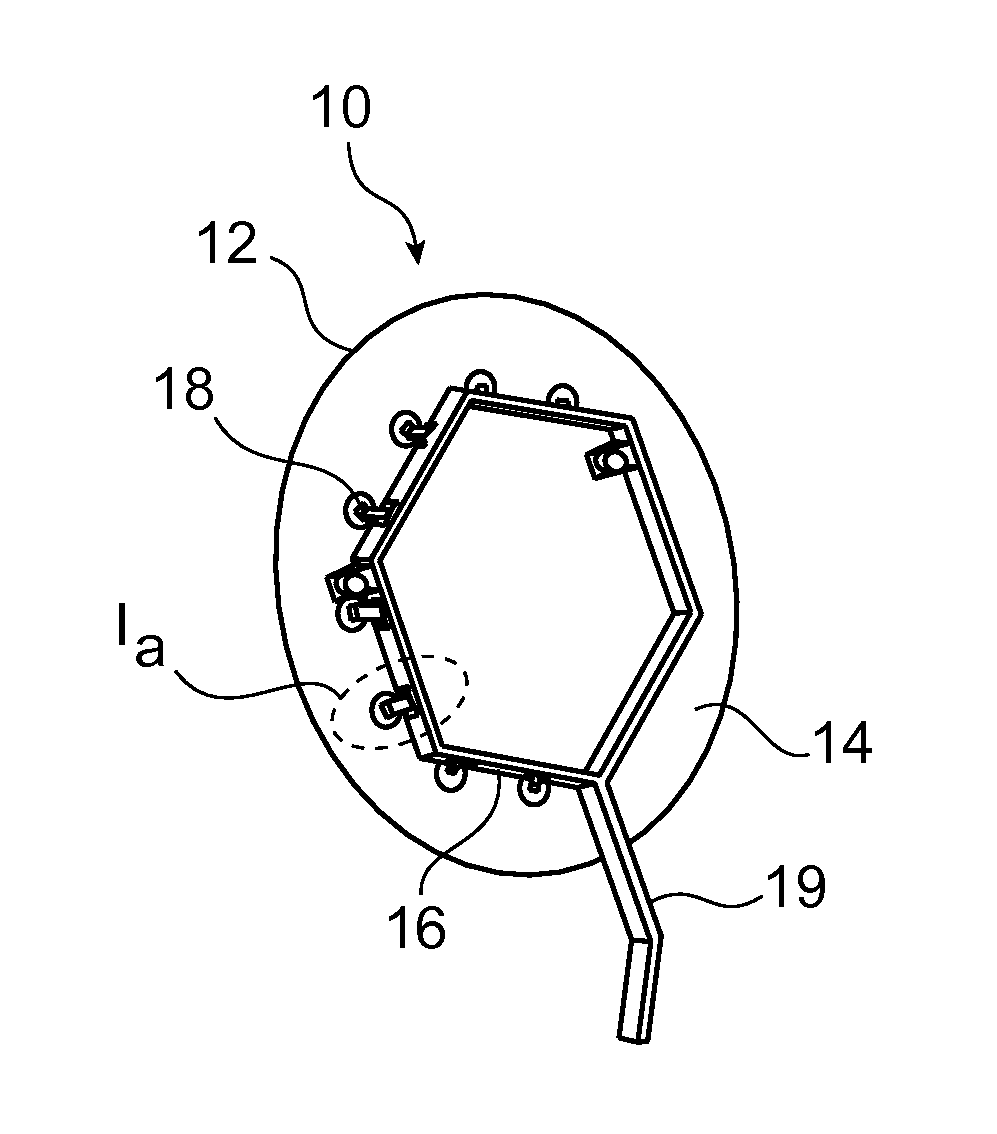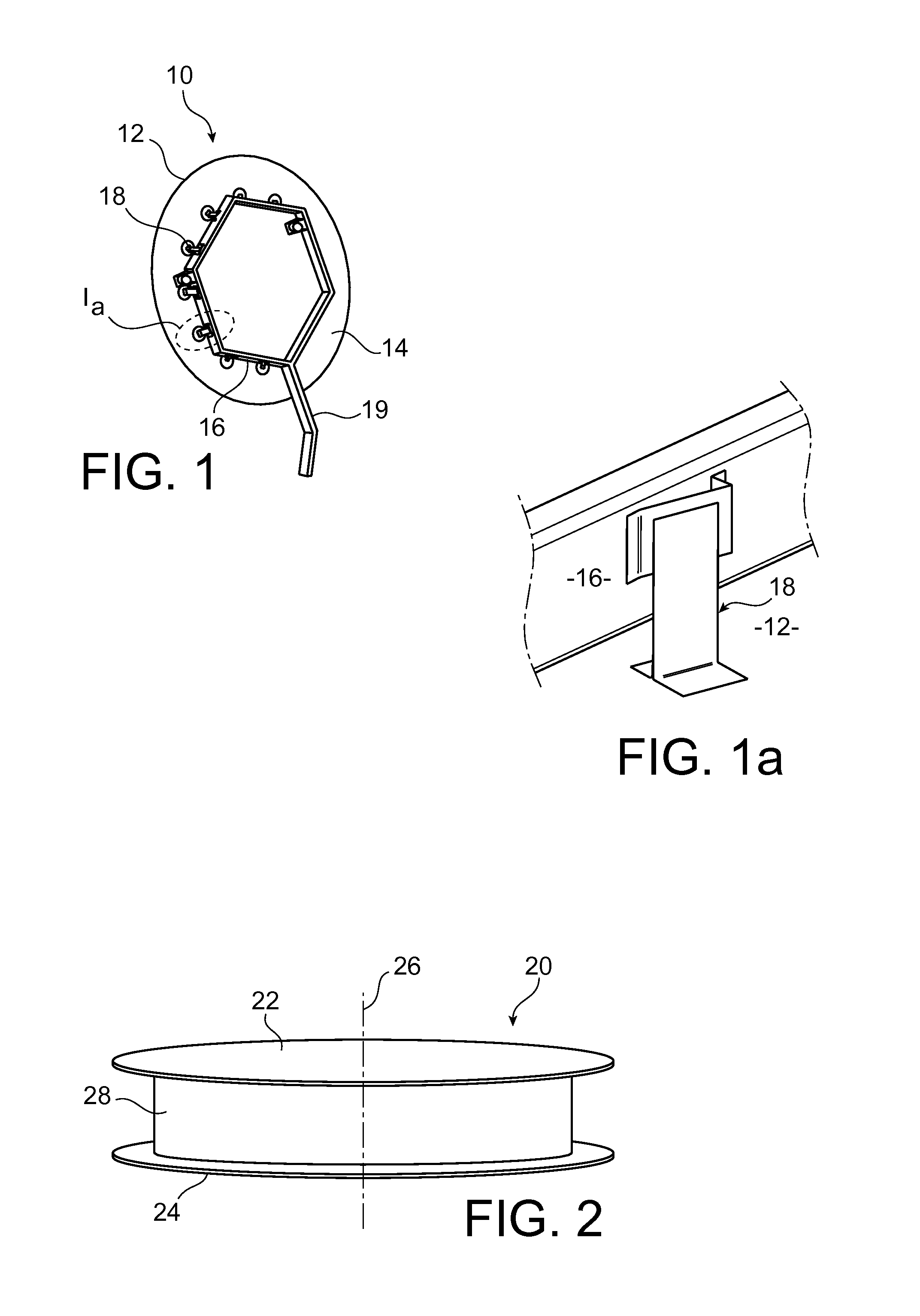Radio antenna
a radio antenna and reflector technology, applied in the direction of antennas, antenna details, wind-induced force reduction, etc., can solve the problems of increased manufacturing precision, insufficient reflectivity properties of perforated reflectors of the type described above, and insufficient acoustic stress resistance of antennae obtained in this manner, so as to achieve maximum contact area
- Summary
- Abstract
- Description
- Claims
- Application Information
AI Technical Summary
Benefits of technology
Problems solved by technology
Method used
Image
Examples
Embodiment Construction
[0052]The invention will be better understood, and other details, advantages and characteristics of it will appear, on reading the following description given as a non-restrictive example, and with reference to the appended illustrations, in which:
[0053]FIG. 1, which has already been described, is a schematic perspective view of a radio antenna of a known type;
[0054]FIG. 1a, which has already been described, is a larger-scale view of detail 1a of FIG. 1;
[0055]FIG. 2 is a schematic perspective view of the reflector of a radio antenna according to the invention.
DETAILED DESCRIPTION OF A PREFERRED EMBODIMENT
[0056]FIG. 2 represents a reflector 20 of a radio antenna for a spacecraft according to a preferred embodiment of the invention.
[0057]Reflector 20 includes a front skin 22, sometimes also called the active skin, and a rear structural skin 24 supported by a support arm (not represented in FIG. 2), intended to provide the connection between the antenna and a spacecraft.
[0058]In the re...
PUM
 Login to View More
Login to View More Abstract
Description
Claims
Application Information
 Login to View More
Login to View More - R&D
- Intellectual Property
- Life Sciences
- Materials
- Tech Scout
- Unparalleled Data Quality
- Higher Quality Content
- 60% Fewer Hallucinations
Browse by: Latest US Patents, China's latest patents, Technical Efficacy Thesaurus, Application Domain, Technology Topic, Popular Technical Reports.
© 2025 PatSnap. All rights reserved.Legal|Privacy policy|Modern Slavery Act Transparency Statement|Sitemap|About US| Contact US: help@patsnap.com


